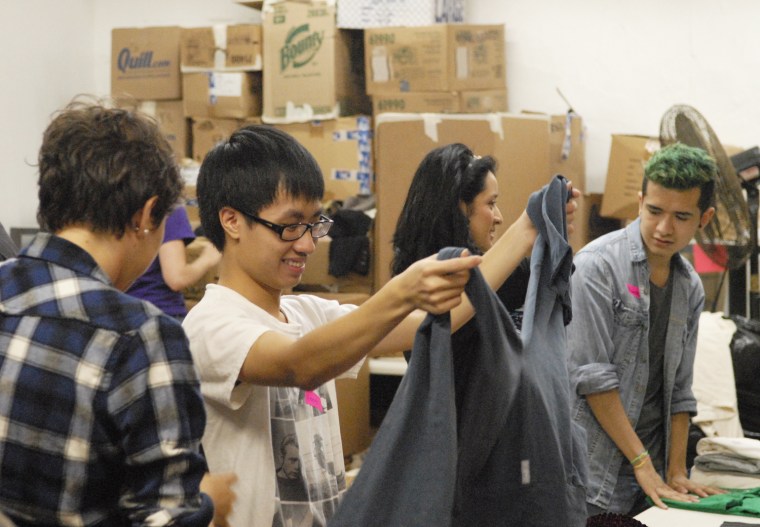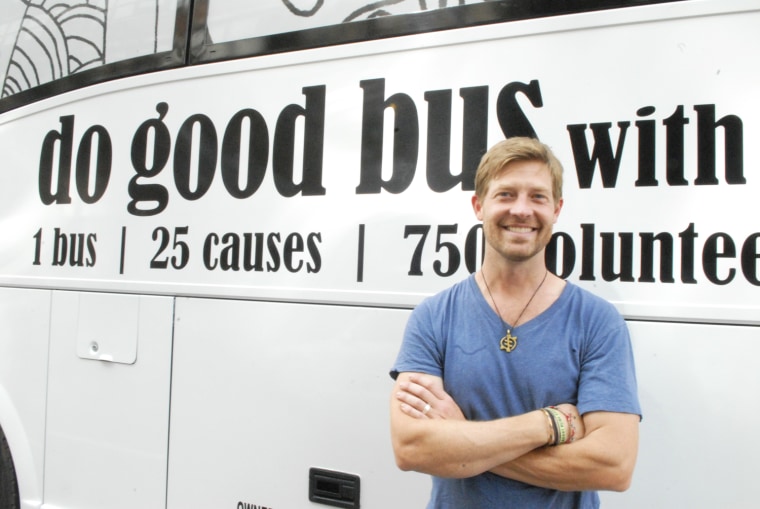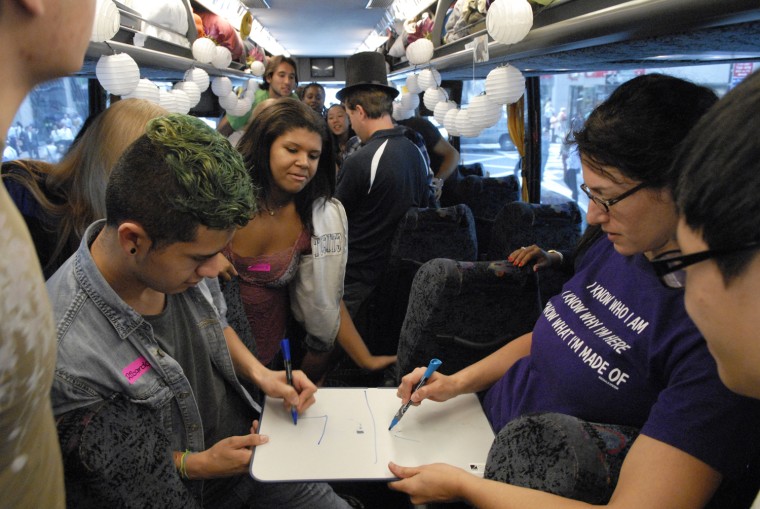
Every parent wants to teach their kids the value of giving back – especially around Thanksgiving. But how? The age group most likely to volunteer are 35- to 44 year-olds and those least likely to volunteer are between the ages of 16 and 24, according to the Bureau of Labor Statistics. So, how can you motivate your teen or young adult to put down the iPad and lend a helping hand?
One strategy: Find opportunities that are relevant to their lives. Erin Parsons and her 17-year-old daughter, Tori, worked together on the Do Good Bus, a mobile charity partnered with the chart-topping band Foster the People, before attending a Foster the People concert in Pomona, Calif.
They both loved the working on a Habitat for Humanity house. Parsons said that she loves “to see the kids have that light bulb moment,” after volunteering, “when they say, ‘I just had the best time of my life. I’m going to stick with this.’”
The Do Good Bus traveled with the band on their 25-city North American tour, stopping in each city to fill the bus with local fans who spent the afternoon volunteering in their community, doing everything from distributing books to kids and sorting clothes donations to planting community gardens.
More great stories from TODAY Moms:
What is Duggar-mania really about?
Why thanks aren't enough for my babies' surrogate
A new way to tame temper tantrums
Parents, what do you do when the bully is you?
“There’s a fire in young people when they get inspired,” said Stephen Snedden, who co-founded the Do Good Bus with Rebecca Pontius. Snedden said that the most incredible reward was when he heard volunteers say, “I’ve gotten way more than I’ll ever give back.”

Parsons said that Tori’s volunteering started at an early age at home with her sister, who is autistic. “When you have a sibling with a disability, you have to help because you have the ability. You need to do more simply because you can.”
Dr. Neil Bernstein, teen psychologist and author of, “How to Keep Your Teenager Out of Trouble and What to Do if You Can’t,” says it’s a parent’s job to raise empathetic kids – and a desire to volunteer will follow naturally. Too often, he says, teenagers are more concerned with what will look good on their college application than with helping others. “Teach them that genuine empathy makes you feel better. It’s a real feeling, rather than a means to an end.”

Parents are actually the strongest role models when it comes to combating a culture of selfishness, , Bernstein said. Children learn empathy from parents, usually at a young age. “Children have to grow up conceptually with empathy,” Bernstein said. “Kids need exposure to it and parents need to integrate it.”
Here are three ways Bernstein suggests parents can integrate empathy into their children’s lives:
1) After watching a movie, start talking about a specific scene where someone is picked on, less fortunate or suffers.
2) Talk about role models who are doing things to help others.
3) If you see someone with a disability in public, ask, “What do you imagine it would be like to live like that?”
How do you teach your children to give back?